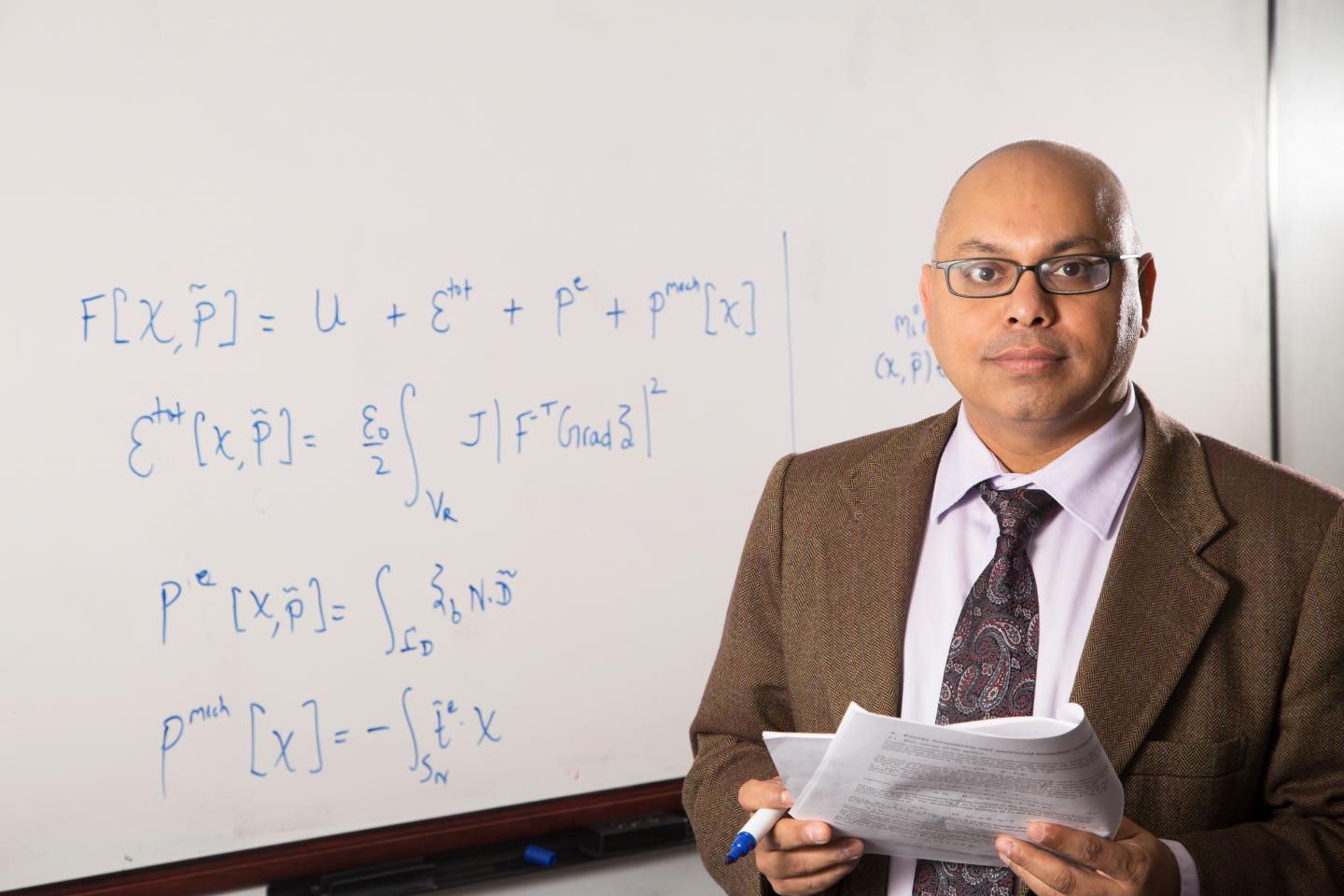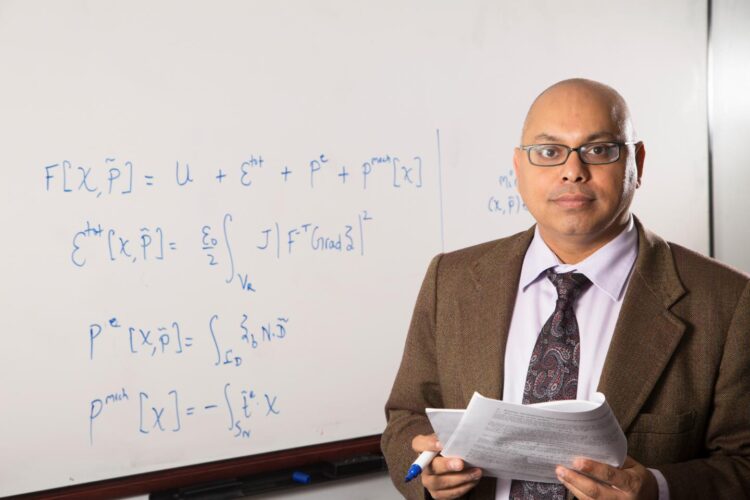UH engineer awarded a Guggenheim fellowship to pursue the question

Credit: University of Houston
Pradeep Sharma, a mechanical engineer at the University of Houston, has been selected for a Guggenheim Fellowship, this year’s only recipient in the engineering category.
Sharma, M.D. Anderson Chair Professor of mechanical engineering and chairman of the department, uses mathematical and computational approaches to understand physical phenomena across a number of disciplines, from materials science to biology. In announcing the new fellows, the John Simon Guggenheim Memorial Foundation cited his work in explaining why some people are able to instantly reproduce a piece of music they just heard, while others – even those who are serious about music – cannot.
The fellowship honors artists, writers, scholars and scientific researchers, who are chosen based on their previous accomplishments and what foundation officials describe as their “exceptional promise.”
Sharma’s work has long been nationally recognized; he received the 2019 James R. Rice Medal from the Society of Engineering Science for “creative contributions to understanding the science underpinning flexoelectricity and its applications to engineered and biological systems.” He previously has been recognized with a Fulbright fellowship and the American Society of Mechanical Engineers Melville medal, among other honors.
The Guggenheim Fellowship, however, came as a surprise. “They are so competitive, I really didn’t expect it,” Sharma said.
The Guggeinheim Foundation has granted more than $375 million in fellowships to over 18,000 individuals since the fellowships began in 1925. Recipients include Nobel laureates, Fields Medalists, poets laureate, members of the national academies and winners of the Pulitzer Prize, Bancroft Prize, Turing Award and National Book Awards, among other honors.
This year’s fellowships recognize 173 people, selected from an initial field of 3,000, with Sharma the only engineer to be chosen.
The foundation purposely seeks out artists, scientists and others whose work encompasses the full spectrum of society. Foundation president Edward Hirsch said that is perhaps even more important this year.
“It’s exceptionally encouraging to be able to share such positive news at this terribly challenging time,” he said. “The artists, writers, scholars and scientific researchers supported by the fellowship will help us understand and learn from what we are enduring individually and collectively.”
Sharma said he will use the award to further his work on a question that has puzzled him for years: Why are some people, even those not trained as musicians, able to hear a piece of music and immediately reproduce the melody on a piano or other instrument, while others cannot. His wife, it turns out, is one of those who can. Sharma, despite being “very passionate about music,” could not. He devoted himself to the study of music for almost a decade, training himself to translate what he heard into notes he could play.
“Part of it is the brain, but the question I want to ask is, is there something structurally different in her ears that she can hear music better? I am looking for a physics explanation for her ability.”
Scientists have a good understanding of how the hearing mechanism works as sound waves enter the ear and move against the tiny hair cells inside. Those hair cells change the vibrations generated by the sound waves into electrical signals that are sent to the brain for decoding.
Sharma said he will investigate to see if certain physical characteristics of those hair cells – geometry, physical properties and even electrical activity around the cells – play a role in how people understand and interpret music.
Paula Myrick Short, UH senior vice president for academic affairs and provost, said she was pleased to see Sharma’s groundbreaking work recognized by the Guggenheim Foundation.
“Dr. Sharma’s body of work crosses disciplines to tell us more about the world in which we live,” Short said. “He has impressive accomplishments in fields ranging from material science to biophysics, and this award will allow him to push into additional frontiers.”
###
About the University of Houston
The University of Houston is a Carnegie-designated Tier One public research university recognized with a Phi Beta Kappa chapter for excellence in undergraduate education. UH serves the globally competitive Houston and Gulf Coast Region by providing world-class faculty, experiential learning and strategic industry partnerships. Located in the nation’s fourth-largest city and one of the most ethnically and culturally diverse regions in the country, UH is a federally designated Hispanic- and Asian-American-Serving institution with enrollment of more than 46,000 students.
Media Contact
Jeannie Kever
[email protected]
Original Source
https:/





